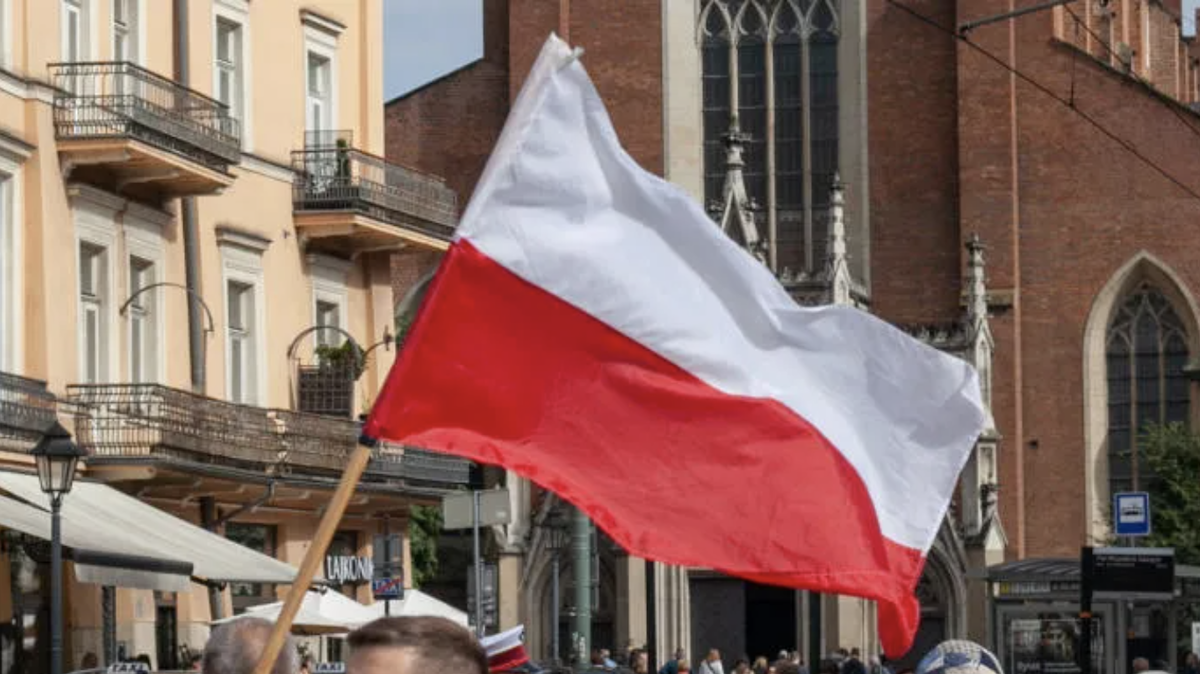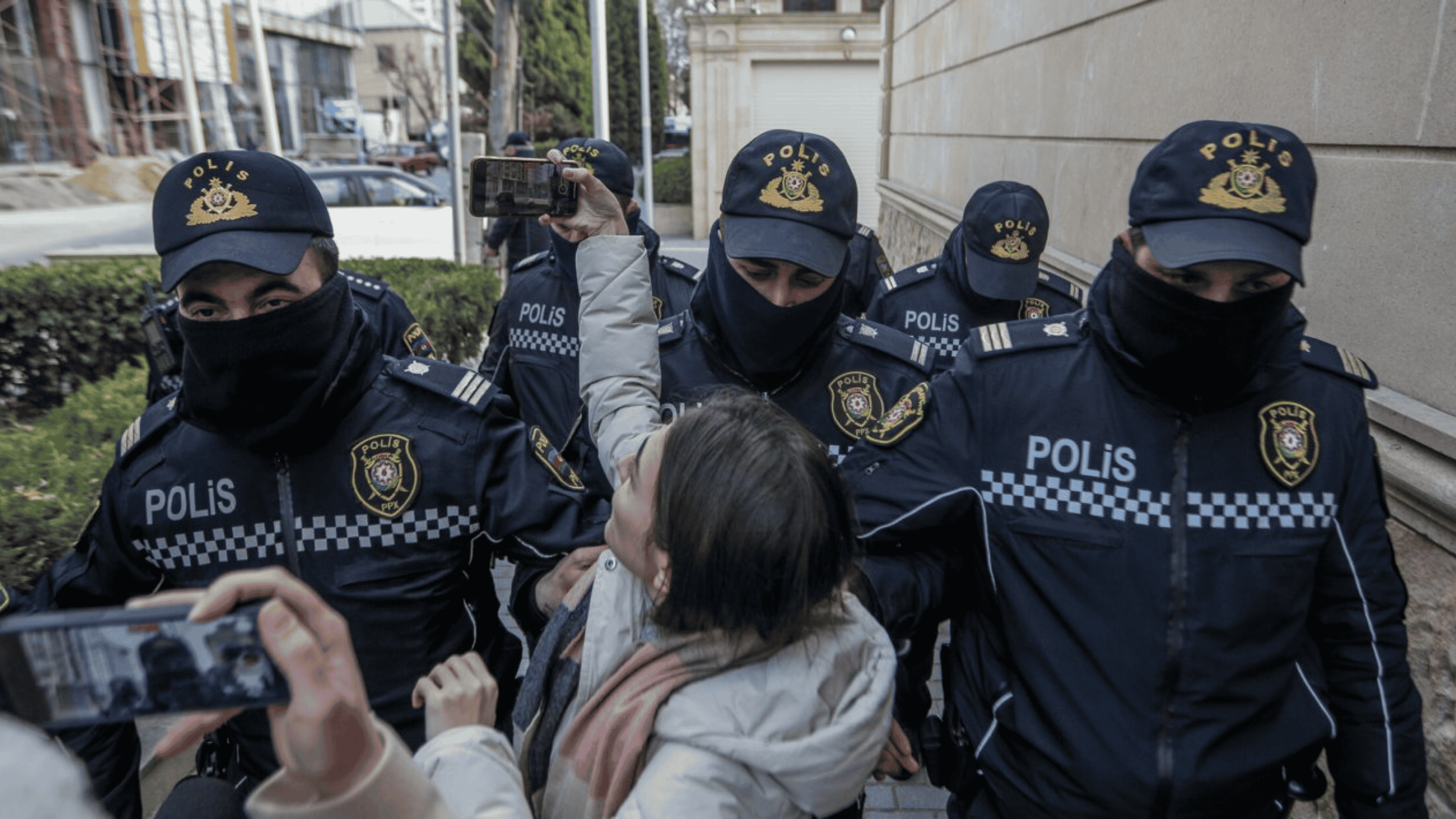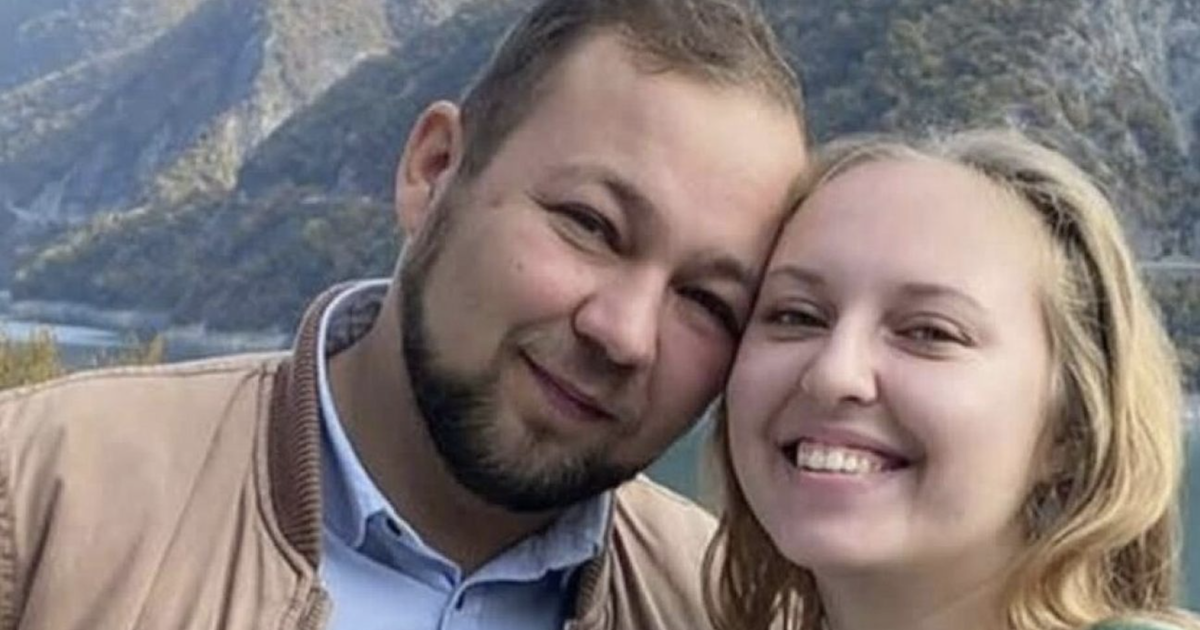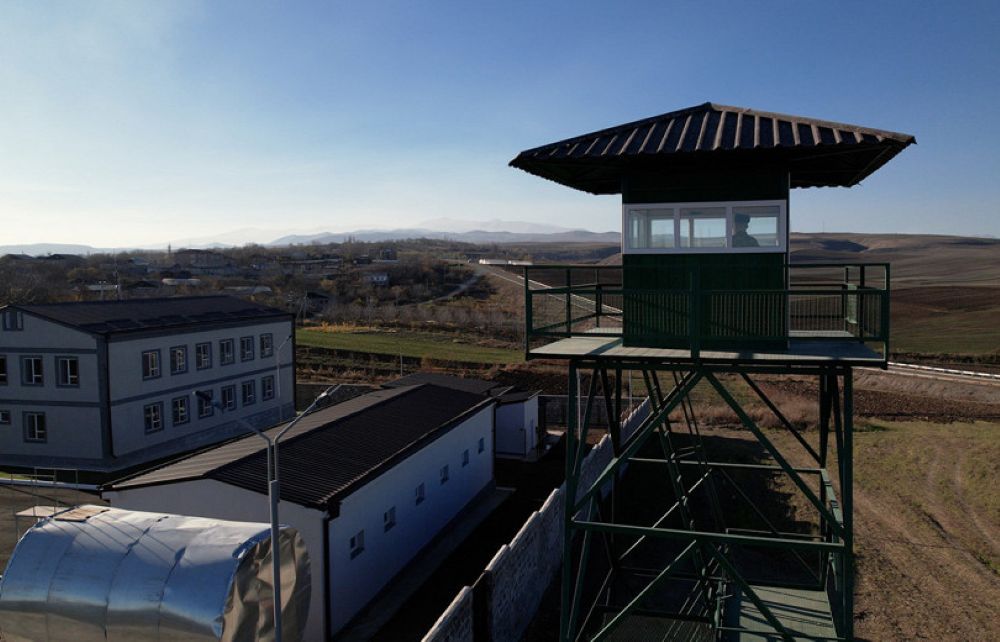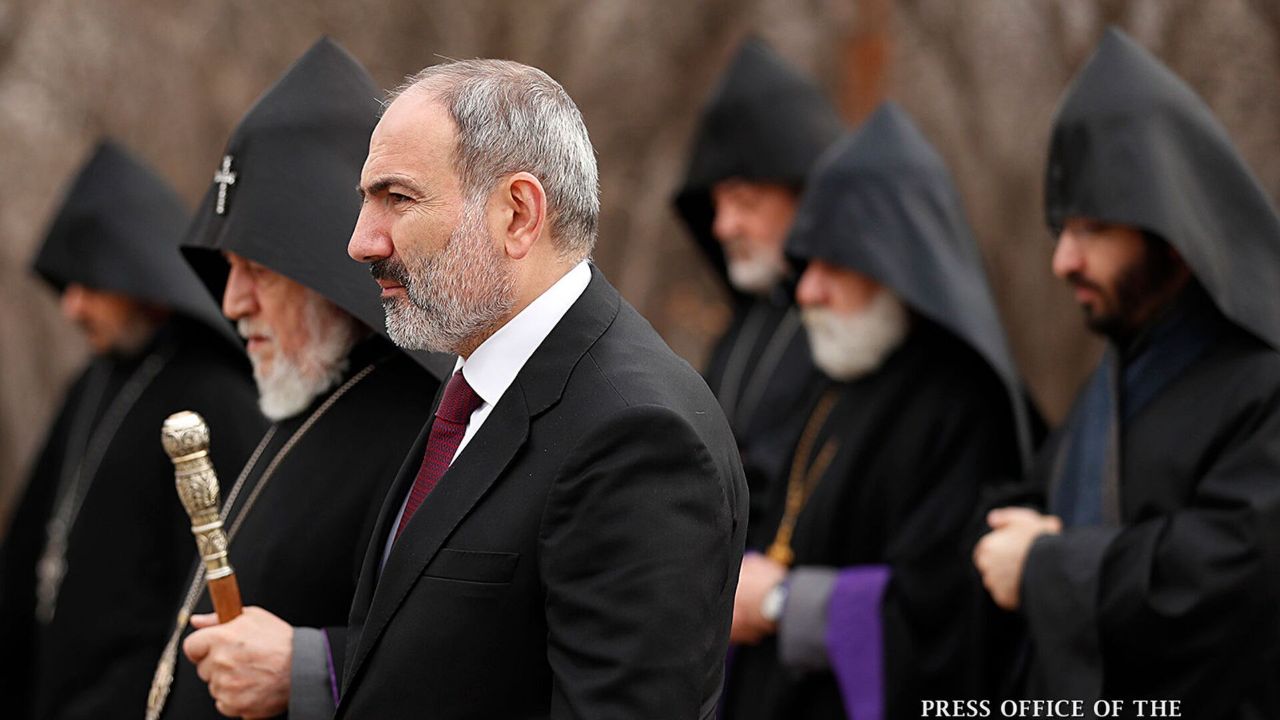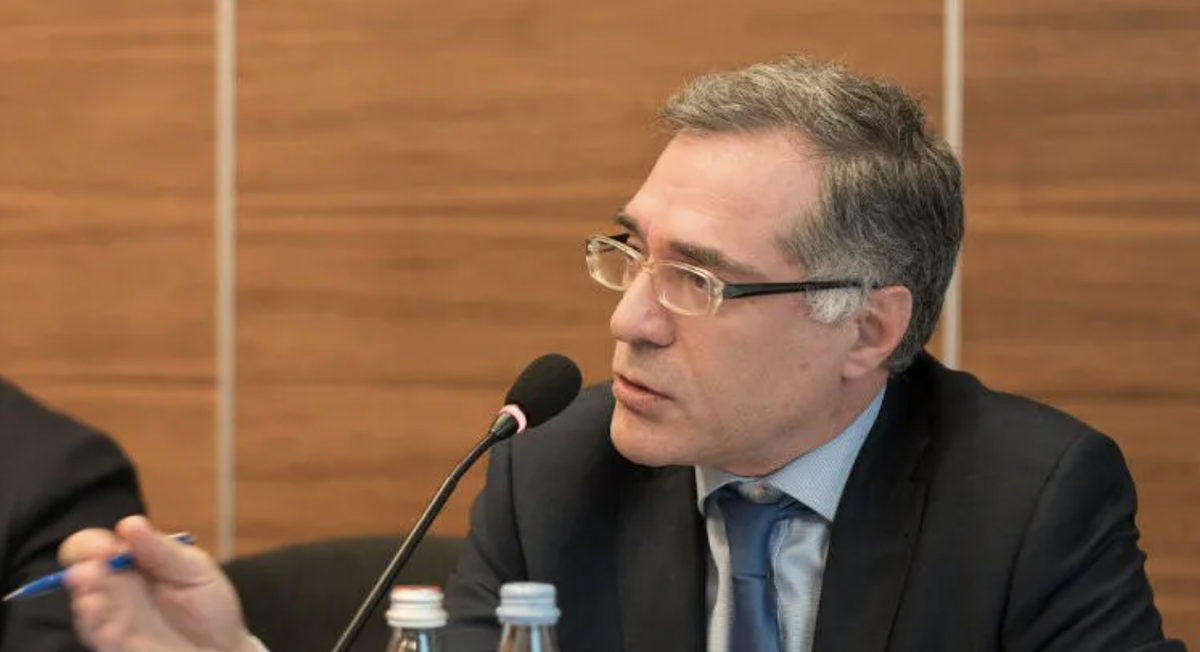A church scandal

For many years, when the theologians, NGOs and part of the community were pointing to the problems, internal confrontation, fundamentalism and corruption within the Georgian Patriarchate and Church, the Orthodox clergy and the congregation referred to them as the ‘enemies of faith and church’.
It was taboo to criticize the Church, the Patriarchate and particular clergymen. The reporters avoided covering those issues.
Whereas today, the situation is obviously changing. And, most importantly, this taboo has been lifted by the clergymen, themselves.
Unprecedented things happened in the past few days – the clergy made public the internal conflict and openly declared a war against each other. Mutual accusations and threats could be often heard from the ambon instead of a prayer.
So, what’s going on in the church, which has become one of the most influential and respectful institution in Georgia after the collapse of the Soviet Union?
West – an apple of discord
When Pope Francis’s plane landed at Tbilisi International Airport on September 30, 2016, ‘the great Pontiff’ probably had no idea that his visit to Georgia would be tagged as the occasion for confrontation in the Georgian Orthodox Church.
Dozens of people gathered outside Tbilisi airport, protesting against a ‘tormentor’ Pope’s visit to the ‘Orthodox country’.
David Isakadze, a priest, who led the protest rally, referred to Pope Francis as a person worse than the ‘Devil’s first disciple’ and the Georgian President who invited him – a comedian.
After the Pope’s visit, in early November this year, an official delegation of the Patriarchate of Georgia visited Brussels jointly with the government members. The clergy held meetings at the EU and NATO HQs.
A split in the Georgian Orthodox Church, that ripened for the Pope’s visit, began as early as in summer, over Georgia’s participation in the Pan-Orthodox Council meeting in Crete. The infamous ‘Union of Orthodox Parents’ didn’t hesitate to term the meeting as those of the ‘robbers’ and ‘apostates’. The Holy Synod made a decision on non-participation in the Crete meeting at its special session on June 10. Theologians and part of the clergy claimed, by making this step the Orthodox Church had thus put itself in complete isolation and once again proved its being on the Russian orbit. The Russian Orthodox Church delegation didn’t participate in the Crete meeting either.
The aforesaid gave grounds to the first open confrontation between the clergy in the modern history of Georgian Orthodox Church. Theologians and experts have been long talking about a split within the Church, but it has never become public.
In the recent month, the clergymen representing different sides have been referring to each other as ‘gangs’, ‘church enemies’, ‘sectarians’, ‘tormentors’, ‘fundamentalists’, ‘ignorant’, ‘illiterates’, ‘Stage 4 cancer’.
The clergymen have been posting FB statuses, hinting to a possible divide in the Georgian Orthodox Church and predicting ‘Talibanization’ of Georgia.
In parallel, there is an obvious conflict between the would-be candidates for the Patriarch’s post. One of those candidates is Metropolitan Archbishop Dimirty (Shiolashvili), who is the nephew of Georgian Patriarch, Ilia II, and, at the same time, a patron hierarch of Archimandrite Raphael Karelin and one of the most extremist groups, the ‘Orthodox Parents’ Union’. According to the commentators and those, engaged in religious studies, Dmitry Shiolashvili has opposed Choirbishop Jacob. The latter has been apparently backed by the government.
Journalists had previously evaded the issue, whereas last week, the ‘Prime-Time’ tabloid published an article, which reports, with reference to a confidential source, about the Patriarchate top officials’ corruption deals and seizure of the Georgian Patriarchate’s property. The matter concerns a particular clergyman, who, according to the newspaper, transferred to a private company a building of the maternity home on the Patriarchate’s balance in exchange for a half a million worth penthouse. That clergyman is Theodore Chuadze, the Patriarch’s Choirbishop, Metropolitan of Akhaltsikhe and Tao-Klarjeti. It was he who led the clergy delegation during its visit to Brussels. And, most interestingly, part of the clergy referred to this article as ‘a smear campaign’, claiming it had been ordered by certain groups within the Patriarchate.
The Holy Synod convened a meeting on December 22 with the aim to defuse the situation. However, the meeting made even more obvious the existing critical situation in church.
The Synod members confirmed that there were problems in the Patriarchate, referring to a ‘power behind the throne’, a ‘grey cardinal, who was purposefully aggravating the situation. Shorena Tetruashvili, Georgian Patriarch’s Secretary, who has been working side by side with the Patriarch for years, was named as such person. She is regarded as one of the most influential and odious figure in the Patriarchate.
In the country, where the Patriarch and Church are enjoying great authority, this scandal immediately got in public spotlight.
The main question that the observers raise is: what’s going on in Church, what is actually at stake in this struggle and is it a conflict between the fundamentalist and relatively liberal wings?
“Some extremist groups are apparently willing to gain a dominant position in church and certain forces have opposed them. The Patriarchate may tactically disassociate itself from a radical wing, but ideologically it supports them. It also could be that the group has become so uncontrollable that part of the clergy has realized that such a position will ultimately affect the Church,” says Levan Abashidze, a theologian.
There are also speculations that the clergymen, who are involved in the struggle for power, are supported by the political leadership. It’s not a coincidence that the clergy are making such bold statements right now, while the majority of them have been turning a blind eye on extremism and intolerance within the Church for years.
Patriarch, No. 1 Influential Person
According to 2014 census data, 83,5% of Georgian population regard themselves as Orthodox Christians.
The U.S. National Democratic Institute’s (NDI) recent survey showed that the Orthodox Church is the institution that holds the record of the highest level of public trust.
The renaissance of the Georgian Orthodox Church started back in the 90s, following the collapse of the Soviet Union.
In the period of national movement, as well as during Eduard Shevardnadze’s ruling (1992-2003), against the background of wars, collapse of public institutions, corruption, large-scale crime, economic hardship and total social vulnerability, the Orthodox Church virtually assumed the function of all state institutions and filled up the vacuum in the social and political fields. The Church turned out to be the only institution that gave a sense of stability to public.
The Orthodox Church doesn’t have a status of state religion in Georgia. The Constitution recognizes the Orthodox Church’s particular role in country’s history, though, it actually enjoys unlimited powers.
Since 1977, Georgian Apostolic Autocephalous Orthodox Church has been headed by Catholicos-Patriarch of All Georgia, Ilia II (Ilia Shiolashvili), whose public trust rating is considerably higher than that of the public officials, all put together, and it almost twice exceeds country’s president and prime-minister’s ratings. Ilia II’s personal authority is named as one of the reasons for particular popularity of Church in Georgia.
Toasts are proposed for Patriarch at the traditional Georgian feasts; his icons could be found in churches; families decide to have the third child in order to have it baptized by the Patriarch [since 2008, on Georgian Patriarch’s initiative, he has been personally baptizing every third child born to an Orthodox family; mass baptizing ceremony is held annually and is aimed at improving the demographic situation in the country]. Once the Patriarch says, he wants to enjoy a right to pardon prisoners, the government is ready to start serious discussions on possible introduction of theocratic governance; who loves the Patriarch most –although half-jokingly, but this issue is still publicly discussed by country’s leaders – ex-President, Mikheil Saakashvili and former Prime Minister, Bidzina Ivanishvili.
84-year-old patriarch rarely makes public appearances due to his health condition. The future of Georgian Orthodox Church, as well as, to some extent, the country’s domestic and foreign policy vectors, largely depend on who will occupy the Patriarch’s throne after Ilia II’s death. Theologians and scholars consider the recent split in the Church exactly through the perspective of standoff between the Patriarch’s would-be successors.
Church – one of the richest organizations
The church-state relations are regulated by the constitutional agreement (Concordat), concluded on October 14, 2002.
Under this document, the state recognizes the material and moral damage inflicted to the Church in Soviet period and undertakes to partially compensate for losses. This huge material assistance, rendered by the state, is referred to by Church as ‘a compensation for losses’. Proceeding from the secularism principle, enshrined in the Constitution, the aforesaid is actually an unjustified practice.
The Orthodox Church is annually allocated about GEL25million from the central budget. In addition, millions are allotted to it from the local, municipal budgets, as well as from the Prime Minister’s and the President’s reserve funds. The resources, accumulated through the taxes collected from citizens, are mostly spent on non-secular purposes, religious indoctrination, construction of new churches and monasteries, and often on procurement of luxury goods.
According to the Public Registry data, the Patriarchate is an owner of huge real estate – 565 land plots and 243 buildings and facilities, with the total area of 1,674 ha. A town nearly 6 times bigger than Mtskheta could be built on such huge area.
The bigger portion of those assets were transferred to the Patriarchate at a symbolic price of GEL1. In addition to those assets, there are funds donated by private companies and congregation.
The Church also enjoys some other benefits. Unlike other religious organizations, it is exempt from taxes. The whole chain of church stores trading in icons, candles and other church inventory, could be found in many places throughout Georgia. The lawyers say that due to the privileges that the Church enjoys under the legislation, production and utilization of those goods is less costly to it than to any other religious denominations.
Those cash incomes, movable and immovable property and statutory privileges make the Church one of the richest organizations in Georgia.
Church and politics: ‘I prefer Orthodoxy to an MP seat’
If we look at the dynamics of funding provided to the Patriarchate over the years, we will see that this funding is considerably increasing despite the elections and political crisis in the country.
This once again proves that the state-church relationship is based on mutual interests – the Church expects the government to pay certain economic dividends in exchange for its support, whereas for the politicians, proximity to Patriarch and posing against the background of candles and icons, is the shortest way to win the electorate’s hearts and a guarantee of successful career.
The practice of using Church, as an influential institution, for one’s political goals dates back to the 90s and it’s still the case.
A video of Eduard Shevardnadze’s baptizing ceremony in Sioni Cathedral, in 1992, has been preserved in the Georgian TV-archive. The former Soviet party leader was baptized personally by the Patriarch, who thus ensured the legitimacy of government that came to power as a result of civil confrontation.
The church-state relationship started facing serious problems during the rule of the new government that came to power as a result of the ‘Rose Revolution’. The Church was not perceived as a supporter of Mikheil Saakashvili’s government. President Saakashvili tried to win its heart by increasing the Church funding. However, due to the ideological differences, that tandem didn’t work out.
The influence of Church further increased in the second half of Saakashvili’s nine-year ruling and the extremist wing regained its strength. According to the observers, it was the Church’s defensive reaction to the pro-Western course and the reforms, carried out by Saakashvili’s team.
During the 2012 parliamentary elections, the bigger part of the Orthodox clergy was openly campaigning from ambon against Saakashvili and was supporting Bidzina Ivanishvili’s ‘Georgian Dream’ party.
One of the clergymen, Tariel Sikinchelashvili, the Archpriest, the Reverend Father of Saguramo-based St. Ilia the Righteous monastery, put the Georgian Dream’ flag on the monastery dome, referring to the party’s victory as the ‘God’s miracle’.
The relationship between the political leadership and the church is more harmonious nowadays. The government is loyal to the Church, which is partially due to the ideological affinity.
The influence of religious groups on the government becomes particularly obvious when the parliament or the government works on some initiative or a bill that the Church opposes.
For example, the Church strongly opposed the adoption of anti-discrimination law, which essentially aims to protect human rights and fight against various forms of discrimination, including discrimination on religious grounds.
The Church’s assault on the bill scared the ruling party MPs so much, that one of the lawmakers, Gedevan Popkhadze, even stated: “If the Holy Synod says: ‘Don’t back it’, personally I, as a parishioner, am not going to enter into conflict with the Orthodox Church… I prefer Orthodoxy to the MP seat.” But the Parliament passed the law anyway, because the international institutions insisted on its adoption. Though, the Church still managed to make certain adjustments to its text.
Religion in Public Schools
A new subject: “Society and I”, will be introduced to the 3rd and 4th grade public school students since September 2017. The Ministry of Education and Science of Georgia approved the aforesaid subject’s standard following 1-year discussions, in June 2016.
The aim of the subject is to develop in students the civil consciousness based on democratic values. The original draft standard included a chapter entitled: ‘What is my faith and belief’, as well as the topics for discussion, such as: ‘Why is it unacceptable to commit violence in the name of religion’, ’Why should we respect the people of different faith’ etc.
The Ministry’s aforesaid initiative was regarded by the Orthodox clergy and the conservative community as an assault on national traditions-the petitions addressed to the ministry were written and the rallies were organized by the clergy.
As a result of the Church’s protest, the approved standard now looks differently: it longer includes such terms as ‘tolerance’, ‘minority, ‘gender’.
Whereas the Education Minister advised the journalists, who were interested in the aforesaid matter, ‘to show courtesy and be more modest when talking on this issue, especially as the matter concerned the Patriarch and the Church.’
Due to the lack of civic value-based and religiously neutral educational system, the Ministry has been subjected to continuous criticism on part of NGOs and scholars.
Religious indoctrination and proselytism still remain an insurmountable problem in public schools.
For example, there were reports in print media that a 14-year-old school student was beaten by the upper grade students just because he didn’t believe in religious miracles. There were also the cases of psychological pressure upon Jehovah’s Witnesses students; there was a case when instead of the physical culture class, the students were taken to a neighboring church to attend a prayer; whereas the teachers of one of the public schools in Ajara told a Muslim student, he was betraying his ancestors’ faith. The prayer and icon corners are often arranged in schools and classrooms and they consecrated by the priests; in many schools classes begin with the Lord’s prayer (‘Our Father’).
However, it’s all different under the Georgian legislation. The Law on General Education prohibits indoctrination and display of religious symbols for non-academic purposes in public schools. Despite that, for many years the Ministry has been turning a blind eye on the systemic problem in order to avoid problems with the Patriarchate and indignation of the dominant religious group.
May 17, fundamentalists and the Russian narrative
On May 17, 2013, on the International Day Against Homophobia, Transphobia and Biphobia, the clergy and their parishioners dispersed a peaceful rally in Tbilisi center, where a few dozens of people gathered to support the LGBT rights.
‘Georgian gays do not exist,’ the clergymen were shouting. One of the protesters even brought a stool to disperse the rally participants.
The statements about fundamentalist attitudes prevailing in certain part of the Church have been recently made by the Church representatives themselves.
In this recent standoff, one part of the clergy has been accusing another one of ‘illiteracy and ignorance, fundamentalism and misanthropy.’
May 17 was hardly a single manifestation of religious fanaticism. Such cases have become a commonplace. It could be often heard in some clergymen’s speeches, in sermons, and sometimes it even acquires more aggressive and violent forms.
For example, a radical wing of the clergy seeks to mobilize the population against the new ID cards. They claim, the faithful should not take new ID cards, since they contain the ‘mark of the beast’.
Anti-western and pro-Russian rhetoric could be often heard along with xenophobic and homophobic messages, voices from the ambon during the sermons –‘Europe perverts our minds’; ‘USA expects us to legalize homosexuality and licentiousness’, whereas ‘Russia is our co-religionist.’
David Isakadze, the Orthodox Church Archpriest, is an ideologist of the ‘Orthodox Parents’ Union’, an organization that exerts violence in the Church’s name. Isakadze is that very clergyman, who protested against the Roman Catholic Church leader’s visit to Georgia, using this argument as a pretext for confrontation with other clergymen.
The ‘Orthodox Parents’ Union’ has been opposing the construction of Catholic churches and mosques; its members claim that globalization and liberal values are the major threats; they attack those, who celebrate Halloween; in 2009, they stormed the Kavkasia TV company’s studio and physically abused the program host and the guests, because they didn’t like the content of the book that was discussed during the program.
The Patriarchate has never publicly condemned the extremists’ actions. On the contrary, it expressed a loyal attitude towards them on the number of occasions, including through the foreign mass media. In 2010, in an interview with Radio BBC, when asked ‘if this organization was set up without the Patriarchate’s sanction, why don’t you condemn the extremists then?’, the Patriarch answered: ‘Because their goals are kind.’ Instead of reprimanding them for such actions, a few years ago the Patriarchate awarded David Isakadze with an embellished cross and the right to wear a mitre.
Many are indignant over that ultraconservative approach and intolerance that are prevailing in church.
‘None of the parties in this process represent the force whom the civil society can fully trust. One can’t predict the likely outcome,” says Levan Sutidze, an author and host of the ‘Talks about Religion’ program. In his words, a conflict that has leaked into the public space could help the society balance the Church power and promote strengthening of a more moderate power in Church.










